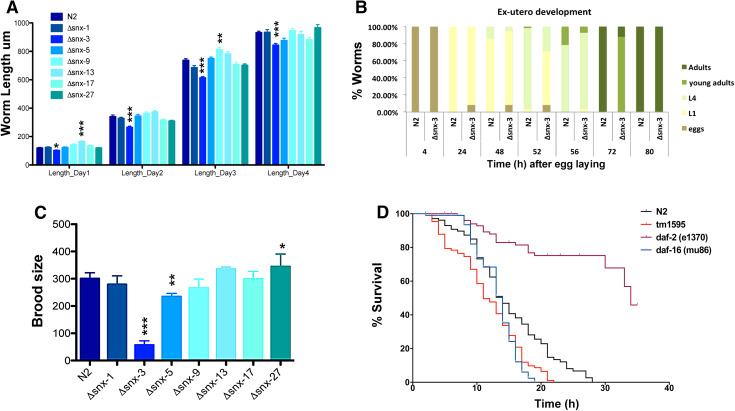Fig. 2.
Phenotypic analysis of SNXs deletion mutants. a Body length measurements of ∆snx-s mutants. The body lengths were measured 12, 36, 60 and 84 h after bleaching; 40–50 worms were studied per genotype, per day. It is noteworthy the significant smaller size of the Δsnx-3 mutant throughout development, comparing to wild-type animals. One-way ANOVA analysis was performed and data represented as mean ± SEM. Error bars correspond to standard error *p < 0.05. b Time-course analysis of Δsnx-3 mutant development. Animals were allowed to lay eggs and develop at standard conditions. Δsnx-3 mutant has a delayed ex-utero development comparing to wild-type strain. c Brood size calculation of the distinct ∆snx-s mutants. Worm progeny at standard conditions was calculated per worm and per strain, on three independent assays. Δsnx-3 mutant has a markedly reduced progeny size. Error bars correspond mean ± SD. d Lifespan analysis of the Δsnx-3 mutant. Animals were grown at standard conditions and daf-2(e1370) and daf-16(mu86) used as controls. Δsnx-3 mutant worms display a reduced survival comparative to wild-type worms (p < 0.001, Kaplan–Meier, log-rank analysis). Lifespan curve is representative of three independent experiments with N > 100, per experiment. Δsnx-3 mutant survival is significantly distinct from the wild-type strain in all three experiments (p always < 0.001) *p < 0.05; **p < 0.01; ***p < 0.001

